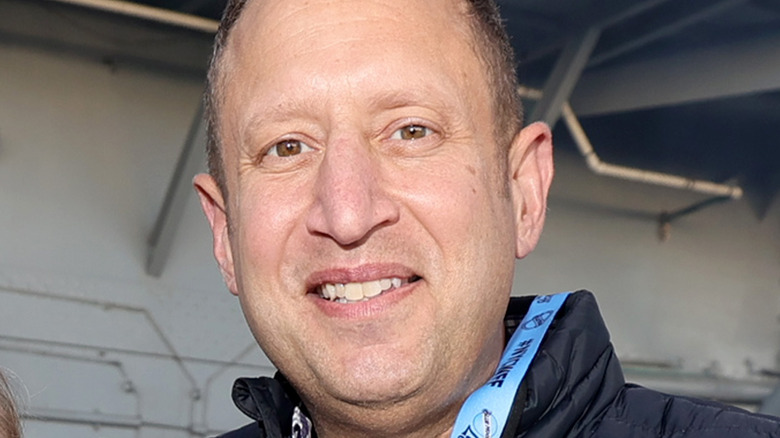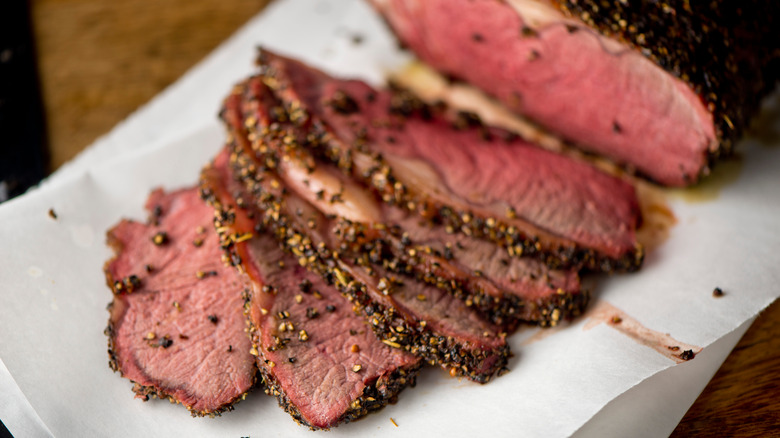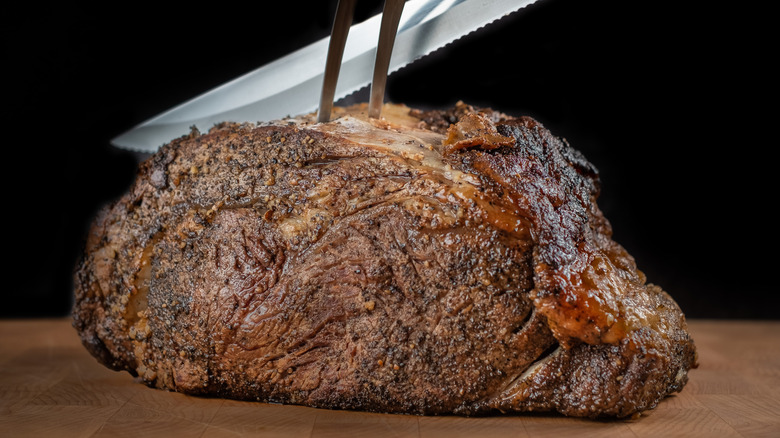The Trick To A Perfect Prime Rib, According To Pat LaFrieda - Exclusive
Prime rib is a meat that's made to impress. The large cut of beef is perfect for feeding a crowd, it's the standout centerpiece that completes any holiday meal or dinner party spread, and — let's be honest — it makes for some delicious leftovers in the form of roast beef sandwiches, especially with some extra horseradish spread.
But as impressive as a prime rib is every time you serve it up for your guests, it can also be a difficult culinary undertaking. A perfect prime has a crispy, seasoned, satisfyingly seared exterior, and contains juicy, flavorful, tender meat on the inside. One wrong move, and you either fail to achieve the ideal outer texture, or worse, you under- or overcook your beef.
To help you master your next prime rib, Tasting Table turned to Pat LaFrieda, the master of all things meat, for some expert insight. The celebrity butcher behind Pat LaFrieda Meat Purveyors shared his go-to tricks for cooking perfect prime rib every time.
Go the extra mile when seasoning your meat
It goes without saying that if you're looking to go all out at your next dinner party with a prime rib, then you'd better go all out when it comes to the seasoning. That means adding plenty of salt to your meat, both for flavor and crunch, according to Pat LaFrieda.
But when it comes to prime rib specifically, LaFrieda has another trick up his sleeve to create melt-in-your-mouth flavor in every bite of this big cut of beef. The butcher says to "[inject] the entire roast beef with garlic." By that, he means to spear it (by cutting slits into the meat on all sides) and literally insert pieces of fresh garlic right into the meat to roast up along with it.
"It cooks so well on the inside," he said, adding that compared to "powdered garlic on the outside ... it's much more of a truer flavor." This also allows the flavor to penetrate deeper into all parts of the meat, explained LaFrieda. "When you season a roast, no matter what kind of meat you use, the surface area is very small in comparison to the rest of the whole roast, so when you spear it, you get much more flavor out of each slice than you would any other way."
Pat LaFrieda says you should be reverse searing your prime rib
Once your perfectly seasoned prime rib is ready to hit the heat, you've got several cooking methods to choose from — including roasting it in the oven, cooking it on the grill or in a smoker, using a slow cooker, and more. But Pat LaFrieda says his go-to, no-fail method is to reverse sear prime rib, which ensures he achieves the ideal charred exterior and a juicy interior that's not overcooked.
To start, LaFrieda says to roast your prime rib in the oven at a lower temperature — around 275 degrees Fahrenheit — keeping a close watch on your meat thermometer (yes, you'll need one of those). Once your meat reaches 115 degrees Fahrenheit, LaFrieda says to "either put it on the barbecue" or "broil it on high heat and turn it constantly," until you achieve a crispy sear all over the outside of the meat. He says this method and these measurements ensure the prime rib reaches about 125 degrees Fahrenheit by the time you're finished cooking and resting it.
Not only is this perfect for serving up a prime rib a la carte or on roast beef sandwiches, but LaFrieda also says that "it makes for the best leftovers, because when you heat them, they will not be overcooked." A perfectly cooked crowd-pleaser and a gift that keeps on giving — you really can't ask for more than that.


